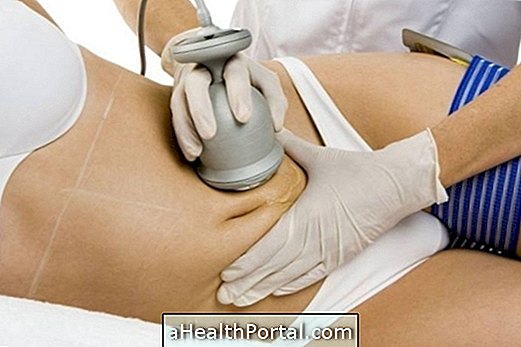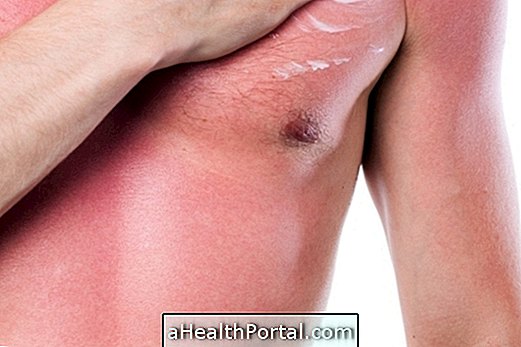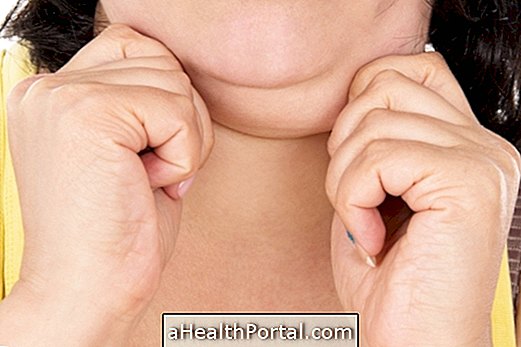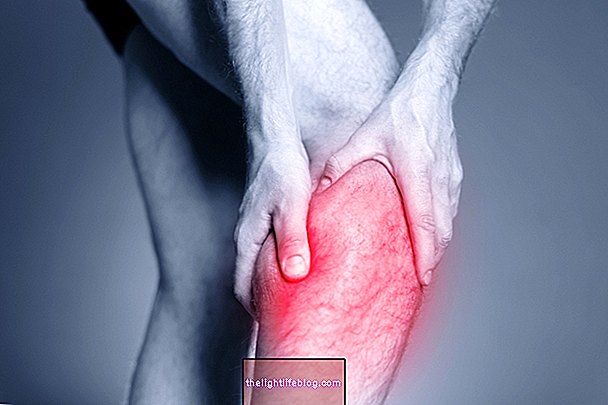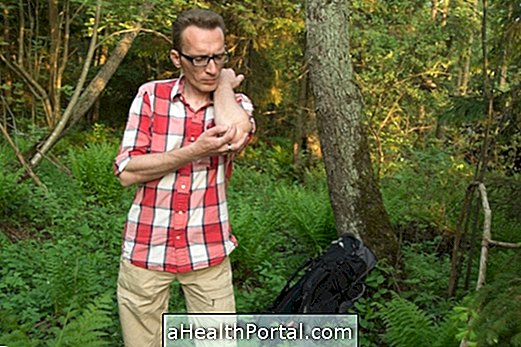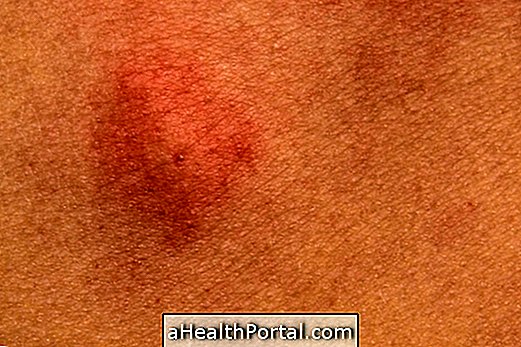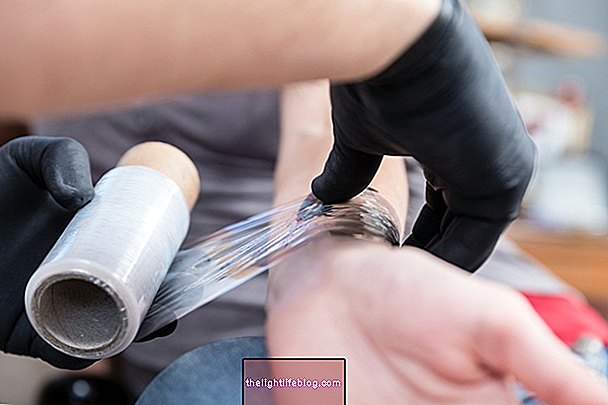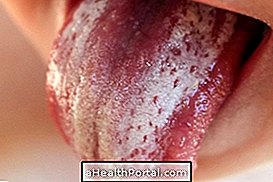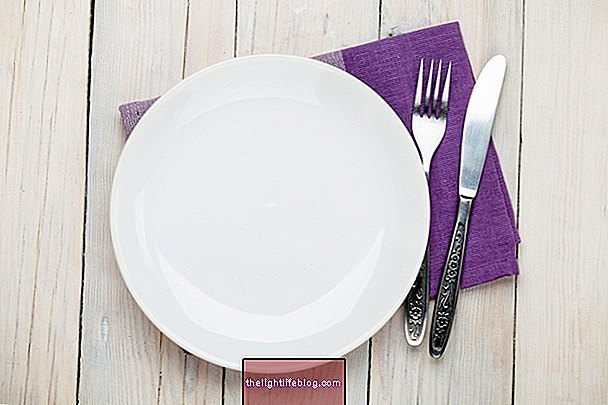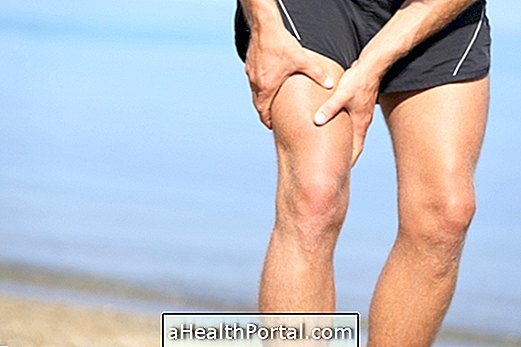To reduce the thickness of the post-surgical scar and to leave it as uniform as possible, one can resort to massage, ice, friction, laser, vacuum and the injection of corticosteroids or specific acids directly under the scar.
In general, treatment can be started 3 days after surgery if the scar is not open or infected. In an initial phase the massage directly on the properly closed scar contributes to remove the adhesions and to remove possible nodules that leave the site of the scar hardened.
See the step by step to do the massage to release the scar that is glued
When the scar is white or as close as possible to the skin tone of the person, if no treatment has been performed, and if it is hardened, high or very wide, an acid treatment can be performed that is applied by the dermatologist or physiotherapist dermato functional.
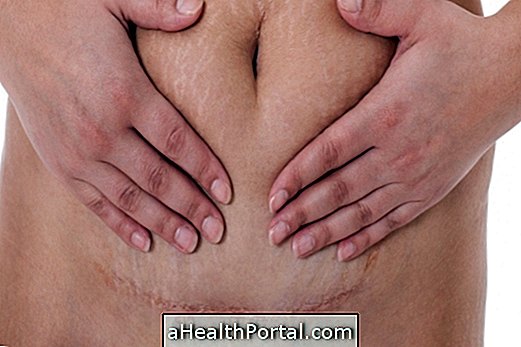
Treatment Options for Cesarean Scar
In order for the cesarean scar to close faster and become more disguised as only a small thin and discreet line in the lower part of the belly, it is recommended to take the following care:
In the first week
In the first 3 days after surgery it is recommended to do nothing, and only rest and avoid moving the scar so there is no risk of infection or opening of the stitches. However, if after 3 days the scar is not too red, swollen, or loosening liquid, it is already possible to start passing a moisturizing cream all around the scar, with gentle movements, so that the product is absorbed through the skin. See examples of ointments to go through the scar.
It is also possible to use oil or gel, and if possible, it is possible to use some product with healing action to accelerate the process and also use manual lymphatic drainage in the legs, groin and abdominal region.
In addition, a brace should also be used to compress the abdominal region and protect the scar, as well as sleep from belly upwards by supporting the legs well with a cushion on the knees.
See the essential care to facilitate healing and prevent the scar from sticking to this video:

In the 2nd to 3rd week
After 7 days of surgery, the treatment may also include lymphatic drainage to decrease pain and swelling. Understand how lymphatic drainage is done. To help drain excess fluid it is possible to use a silicone cup to gently suction the skin, respecting the sites of vessels and lymph glands.
If the scar is tightly closed and dry, it will be possible to start massaging exactly on top of the scar with circular movements, up and down, from side to side so that the scar does not stick, looking like it is fully sewn. If this happens, in addition to hindering physiological drainage, it may even make stretching of the entire belly region difficult.
After 20 days
After this period any change can already be treated with equipment such as laser, endermology or radiofrequency. If the cesarean scar still presents with fibrosis, which is when the site becomes hardened, it is possible to remove it with radiofrequency equipment, in dermatologic physiotherapy clinics. Usually 20 sessions are sufficient to remove much of this tissue, releasing the scar.
After 90 days
After 180 days beyond the resources indicated until here also the treatment with acids that must be applied directly on the scar can be used. These remain for a few seconds on the skin and should be removed completely and are very effective in removing the most superficial layer of the skin by renewing all this tissue. The acids can be applied by the dermatologist or by the physical therapist dermato funcional.
It usually takes 1 session per week or every 15 days for 2 or 3 months.
When is it necessary to resort to plastic surgery?
When the scar is more than 6 months old and is more bulky than the rest of the skin around it, when it is too tight, if there is keloid or if the appearance is not very uniform and if the person wants immediate treatment, a new plastic surgery for scar correction.
However, in any case esthetic physiotherapy is indicated and can improve the appearance of the scar, its thickness and improve the mobility of the tissues around it, improving the woman's quality of life and self-esteem but in this case instead of 20 or 30 sessions may require a longer treatment time.
